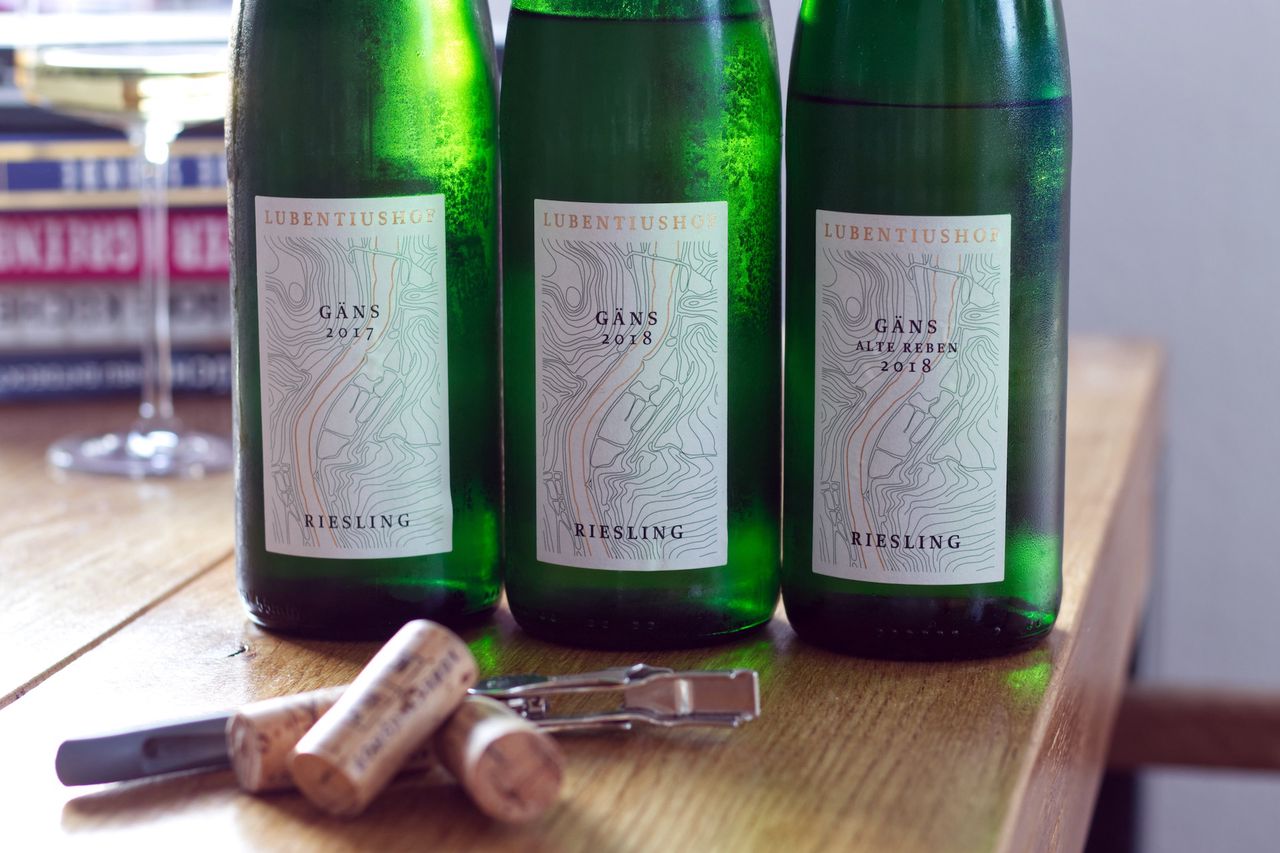Three Bottles Lubentiushof
Today we drink three wines from the Gondorfer Gäns site of 2017 and 2018 from the Lubentiushof winery.

To conclude our small Moselle series over the turn of the year, we’re heading a long way downriver to the Terassenmosel. Coming from a completely different field of work, Andreas Barth took over the Lubentiushof winery in Niederfell in 1994 and began making Moselle Rieslings. In the meantime, he has also become cellar master on the Saar at the Von Othegraven winery, which is also known for its owner Günther Jauch. But we remain on the Moselle today. Basically directly opposite the winery in Niederfell on the other bank of the Moselle is the Gondorfer Gäns site. Here the Riesling vines grow in terraces on the steep slope on slate soils. All three wines are grown there. Two of them dry vinified, in this case Moselle dry with around 6 grams of residual sugar and around 7 grams of acidity, as Riesling Gäns from 2017 and 2018 and a bottle of Alte Reben, old vines, 2018, which has a little bit more residual sweetness with around 16 grams. What all the wines have in common is that they are fermented spontaneously and then in the process lie on their lees until next summer.
Starting with the 2017 Riesling Gäns, this smells creamy and of yellow fruit and has retained a good amount of flinty stink despite years on the bottle. The tension on the nose is really fun to smell and you keep hanging over the glass. On the tongue the wine is then super clear, again has a light yellow fruit and a relatively tame acidity. Where after the last two weeks, the reference with 2021 has probably been moved a bit in the direction of lightsaber acidity though. After a brief bitter note, the wine lingers on the tongue forever.
The flint fades over the night, but the clarity remains. There’s a bit of canned fruit and mango on the nose. The texture in the mouth is great and, I’m getting ahead of myself, the vintage difference from 2018 is very noticeable. 2017 seems a bit more elegant and brighter in aromatics while then also having a bit less intensity. I think the wine is in a really great phase right now, where you can tell the bottle maturity is just starting to kick in. Very nice.
As I mentioned, the 2018 Gäns is darker and more intense. There’s less flint and less fruit, but a decent plus of power. And the wine feels quite different in the mouth as well, though the differences are hard to put into words. There are a few sour apple rings, some grapefruit and also the slight bitter note, but here it’s clearly reminiscent of the white stuff in the citrus fruit. There’s also a lot more herbs in the wine. It’s different, but equally good.
Overnight, the wine becomes more ethereal. The citrus bitterness on the tongue comes out even more clearly. There are also white flowers and it reminds a bit of shower gel. That doesn’t sound particularly flattering now, but it’s actually quite nice. Marigold or something along those lines and a bit of pineapple and a big load of creaminess to it. I want to say that the wine seems further down its road, more mature, but I think that’s the vintage and the different flavors as a result and not so much the actual stage of bottle maturity. It would certainly be exciting to compare this again in a few years.
The old vines start directly even more intense in the nose. There is relatively little fruit, but this dark minerality, which we already had in the summer at Mythos Mosel in the nose. This is just really great. Despite the power, however, there is zero oppulence. This is very dense and quiet at the same time. Very shortly after opening, the bitter note here was so clear that I was a bit afraid where this might go. But this has completely recovered and is now creamy and full of tension at the same time. This is clearly the longest wine today and the charm, aided by the bit more residual sugar, suits the wine enormously well.
And even a day later, there is still so much tension in the wine. The stone, some grapefruit, cassis and a few gummy bears. In addition, some thyme and on the tongue a great amount of texture. This is really good Riesling and the perfect conclusion to the little Mosel tour.